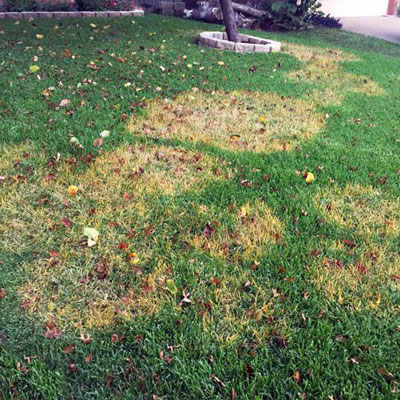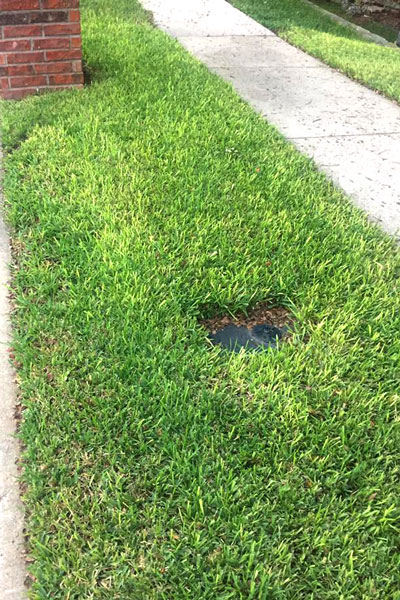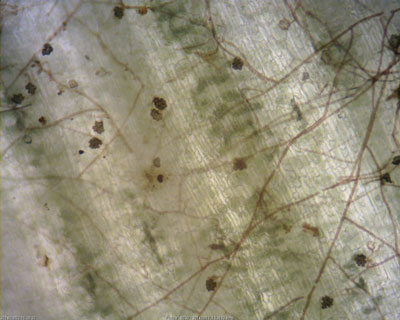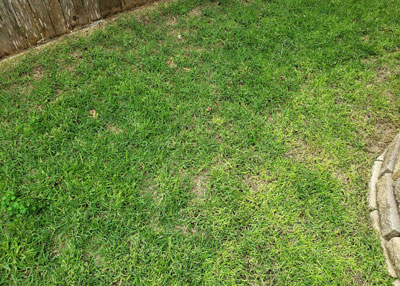Looking at Lawngrasses Again
I promised you bullet points to cut through the fungal fog of fall lawn diseases in Texas. Here are the two that are ravaging our turf as I write and you read.

Brown patch, with its round circles, is instantly recognizable.
Brown patch of St. Augustine…
• Starts as sprinklings of yellowed blades.
• Appears in almost perfect circles 18 to 24 inches across.
• Circles may merge together, but you’ll still see the original circular patterns.
• Leaves are rotted at the bases of their sheaths – where they attach to the runners.
• Blades pull loose easily from the runners.
• Runners and roots remain unaffected. It attacks only the blades.
• Patches turn entirely brown within 5-7 days.
• New green blades may start to appear in centers of circles after a couple of weeks.
• No permanent damage is done to the turf unless extreme cold in winter damages the weakened areas.
• Brown patch is primarily a disease of October and November.

This is a fall outbreak of take all root rot (TARR). Photo taken just two weeks ago by a FB friend.
Take all root rot…
• Much more prevalent in alkaline soils, especially along I-35. Much less common in East Texas.
• Shows up as irregular washes of yellow across the lawn.
• Blades remain attached to runners (distinguishing it from brown patch).
• Blades do not show diamond-shaped lesions (distinguishing it from gray leaf spot, a summer problem).
• Runners may pull loose easily from the soil because of gnarly and damaged root systems caused by the fungus. In this case it resembles damage done by white grub worms, but grubs will not be found in the soil.
(Much of the following information has been supplied to me by my friend Dr. Phil Colbaugh, retired from the Texas Agricultural Experiment Station of Texas A&M. Phil has long been an expert in take all root rot.)

Hyphopodia of TARR are clearly visible with low-power magnification. Photo courtesy Dr. Phil Colbaugh.
• With low-power magnification of a hand lens or magnifying glass, you should be able to see the hyphopodial suction cups that hold the fungus to its host.
• If you do not bag your grass clippings you may be spreading the TARR fungus within your own lawn.
• Lawn maintenance companies can spread TARR from lawn to lawn as they mow. Talk to the people who mow your lawn and ask them to practice good sanitation.
• Spray with Heritage or Cleary’s 3336 (both commercial products) or Scott’s DiseaseEX Lawn Fungicide or Bioadvanced Fungus Control for Lawns. While these won’t cause yellowed blades that are already affected by the toxins to green up again, they will stop further spread of the organism.
• Sphagnum peat moss spread 1 inch deep across the lawn is a preventive treatment. Dr. Colbaugh does not recommend its use at this time, but it’s likely that it will be useful in creating an acidic layer come spring. I’ll have more details come early spring.

TARR can also attack zoysia turf, as evidenced by this San Antonio lawn.
